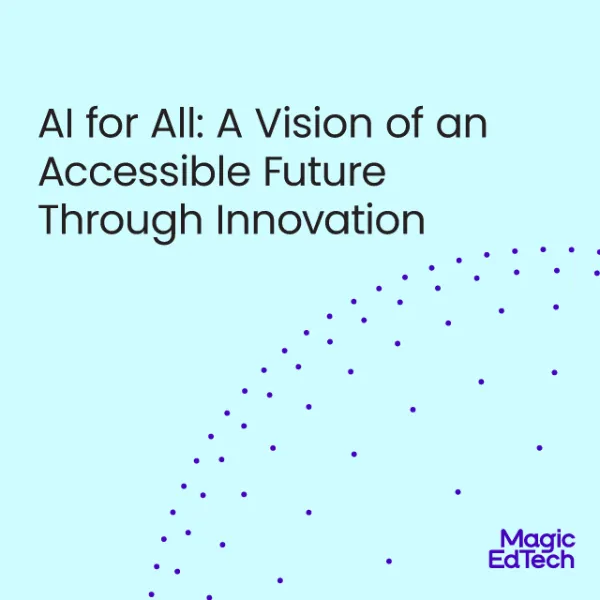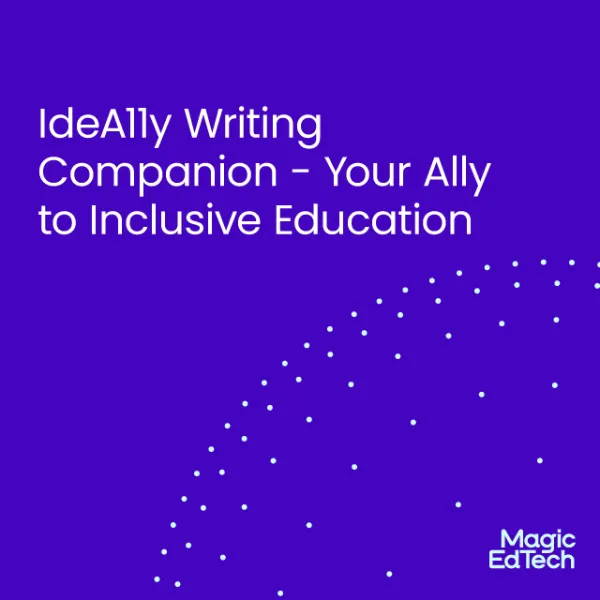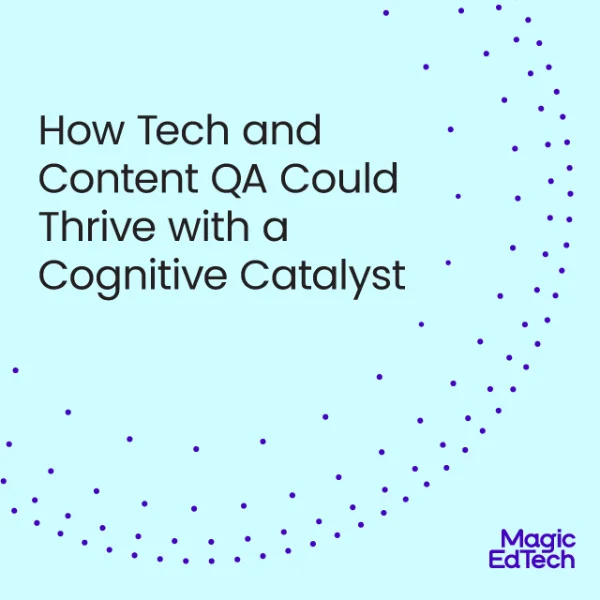The AI Advantage for Quick Course Development
- 15 September, 2023
- Reading Time: 5 mins
AI is already an integral part of our daily lives, even if we don’t always realize it. Think about how Google tailors search results to your history, how Amazon suggests products you might like, or how Alexa predicts the weather. It’s everywhere!
So, why does it seem unusual to some when discussing AI in the education industry? We shouldn’t see AI as a replacement for human involvement. Instead, it’s a tool to gear up our capabilities and lighten our mental load, freeing us to be more creative and innovative.
From this perspective, AI seems perfect for content creation in edtech platforms. However, despite its growing popularity, AI has yet to achieve its full potential in this field.
Today, education is not about creating a workforce but meeting evolving educational demands. So, if you are wondering how to use AI for quick content creation, keep reading.
How AI pushed dynamic Content Creation into Hyperdrive
Educational institutions can use edtech platforms with AI algorithms to gather data and personalize their students’ learning journey. AI assesses a learner’s existing knowledge and tailors content’s pace, depth, and breadth to their unique needs.
Automation for Creation
History is full of inventions that automated tasks, from the printing press to the assembly line. AI can do the same for education, making it more efficient and cost-effective. When you think about it, here’s what educational content creators struggle most with:
- Summarizing text and choosing the right writing style.
- Consolidating content from multiple contributors into a repository.
- Creating personalized question banks and inclusive content.
- Turning text into images and other interactive elements.
- Integrating elements of Augmented Reality (AR) and Virtual Reality (VR) into education.
- Creating and implementing blueprints for EdTech platforms.
Sound familiar? These are all tasks that GenAI can tackle too. Institutions and edtech companies can now create more, targeted content and expand their reach without hiking up costs. It’s a win-win, making learning more personalized and freeing valuable time for what truly matters.
Not only content creators but AI can assist in automating mundane tasks, freeing up experts to focus on more strategic aspects of course development often hindered by resource constraints. This leads to greater scalability and the ability to meet increasing demand.
Ensuring the quality of course content is paramount. AI-powered tools can perform automated quality checks, identifying inconsistencies, errors, or outdated information. Moreover, AI can assist learning providers in allocating resources more efficiently, directing them toward courses that are in higher demand or need improvement by analyzing data on learner behavior and preferences.
How Can AI Make Learning Tools Better
We’re talking about AI making learning better, helping out our hardworking teachers, and creating personalized learning a breeze.
AI can do some amazing things, and we’ve got to keep a close eye on how it’s evolving and what role it plays in our world. University degree programs are incorporating AI for content creation in courses because of its effectiveness.
Now that we’ve acknowledged the big elephant in the room, let’s dive into the fun stuff – all the incredible ways AI is shaking things up in education.
Check out these remarkable ways AI tools are changing the way we learn:
- Personalized Tutoring: AI can be the ultimate study buddy. Tutoring programs can blend human interaction with AI to create personalized learning programs. AI can analyze individual learning styles and progress to tailor educational content and assignments, ensuring that each student receives a customized learning experience.
- Virtual Teaching Assistants: AI-powered virtual teaching assistants provide instant support to students, answering questions and offering guidance, thereby lightening the workload of educators and making education more accessible.
- Collaborative Learning Platforms: AI-driven platforms create virtual communities where students can collaborate, share knowledge, and seek assistance from peers, fostering a sense of collective learning.
- Speech Recognition: AI-based speech recognition technology helps students and educators alike. It can transcribe spoken words into text, making content more accessible to those with writing difficulties or specific accessibility needs.
- Virtual Learning Companions: AI-driven virtual learning companions offer guidance and assistance across various educational levels, making learning resources available to a wide range of learners.
- Course Improvement: If lots of students are tripping up on a particular question, AI’s got your back. It pinpoints the exact stuff students are struggling with so teachers can fine-tune their teaching materials and methods. Moreover, it’s crucial to emphasize that AI is about job enhancement, not replacement. AI isn’t here to steal jobs or creativity. It’s here to complement human skills. With AI aiding in course improvement, educators can harness its analytical power to enhance their teaching strategies while retaining their creative input.
- Student-Centric AI Tools: AI tools specifically designed for children incorporate features like voice recognition, accommodating the unique communication styles of young learners and aiding in their educational journey.
- Big Data for Educational Insights: AI can analyze large datasets to provide valuable insights into teaching methods, learning trends, and curriculum optimization. It supports educators and institutions in making data-driven decisions for improved education.
AI in education isn’t just about cool tech; it’s about making learning accessible and tailored for everyone. Bernard Marr lays it out, highlighting how AI is changing the game:
AI in education is a paradigm shift in how we approach teaching and development. Regardless of language, visual or hearing impairments, or even illness, AI breaks down barriers, making education accessible.
Remember, AI is just a tool that aims to level the playing field by providing equal opportunities for students from diverse backgrounds, regardless of social class, race, gender, sexuality, ethnicity, or physical and mental abilities.
As the consensus on AI’s incredible benefits, from inclusivity to personalized learning, grows, the future of AI in education appears promising, with the potential to improve education for every student.
Do you want to incorporate AI in your educational institution to create an excellent EdTech platform? Let’s talk! At Magic EdTech, we offer the best AI-based solutions to institutions looking to develop innovative EdTech platforms.
Start your journey of reshaping the future of education with AI-based quick course creation and other related capabilities. Schedule a call with our experts today!





